Stews certainly help to take the chill out of winter. That’s why we make a lot of these warm and hardy meals in our house. But it seems a shame to consign all the lovely leftover vegetable scraps–the roots, the bulbs, the carrot tops–to the compost bin.
That’s why, after reading an article about growing a compost garden in the Illinois News Gazette, the kids and I decided to grow a garden from the leftover roots from fresh vegetables from our latest stew. Granted, we won’t be harvesting the, er, “fruits of our labor” this summer, but it was still fun to cheat winter by watching our garden grow.
Photography by Justine Hand.
Above: Root vegetables such as the carrots, potatoes, and beets above lend themselves quite well to compost gardening, as do beans and bulbs like onions and garlic. You can also try citrus seeds that have been soaked in water or even pineapple (though neither of these worked for us).
Above: For leafy vegetables like carrots and beets, select specimens with the tops intact. Then solicit your little helpers to cut off all but 2 or 3 inches of stem.
Above: Prepare a bed of gravel, small stones and/or soil in a shallow dish or pie plate. We chose an antique cash drawer from Oh Albatross, which we lined with plastic. You can find a similar vintage divided drawer on Etsy.
Above: For carrots and beets, push them into the gravel cut side down and add water to the top layer of rocks. Keep well watered. Plant beans a couple centimeters deep in soil and keep moist. As a bulb, garlic takes well when placed shoulder-deep in either soil or gravel.
Next, place your compost garden in a sunny spot and wait.
Above: Remember this technique with avocado pits? It works with potatoes too.
Above: After a couple of weeks, our carrot tops are coming along nicely.
Above: Our beans began to sprout too.
Above: Garlic greens can actually be harvested to add a bit of flavor to future soups and stews.
Above: Here come the beets.
 Above: Here is our whole garden after about three weeks. We’re going to keep it going.
Above: Here is our whole garden after about three weeks. We’re going to keep it going.
Above: As the kids admire their new garden, I’m thinking that I’ve secured two recruits to help with the real thing this summer.
N.B.: If we’re still looking for another way to cheat winter with a little indoor cultivation, next month I think we’ll try this Edible Garden on Wheels.


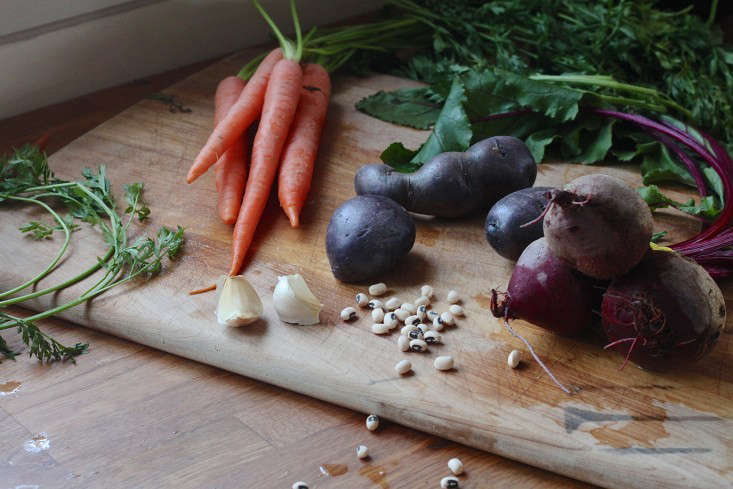
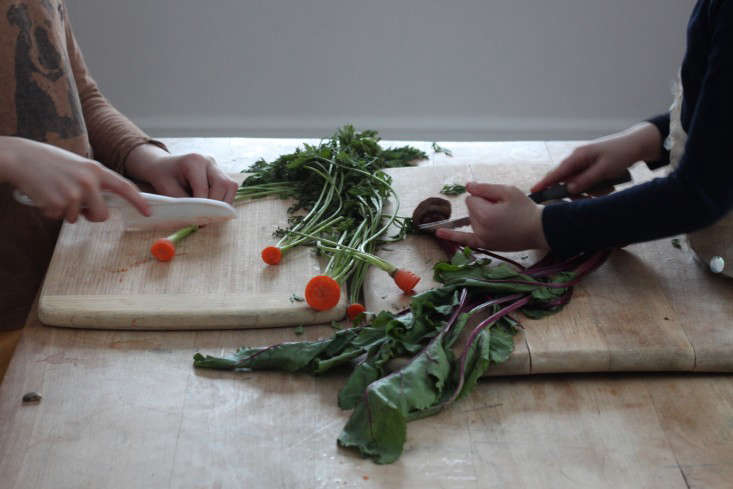



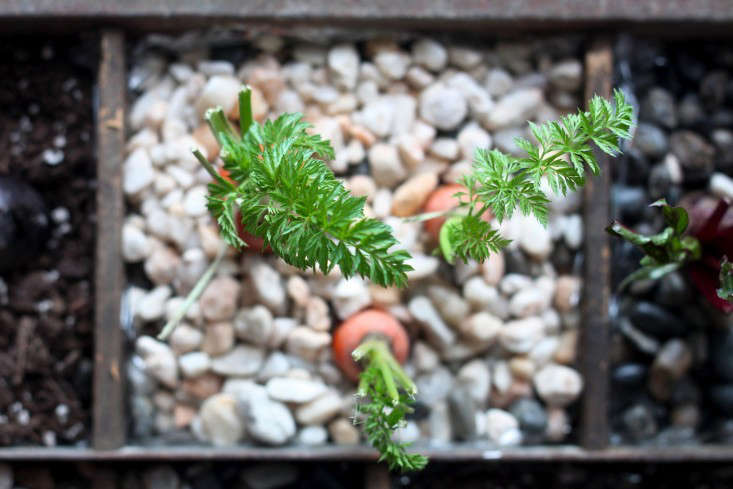

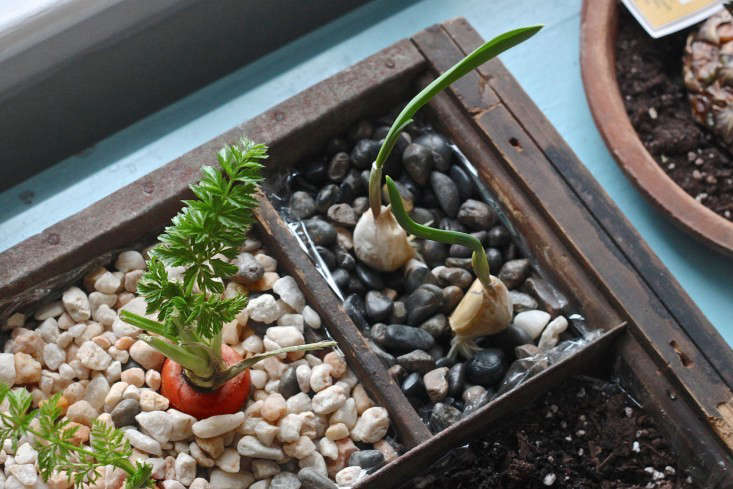
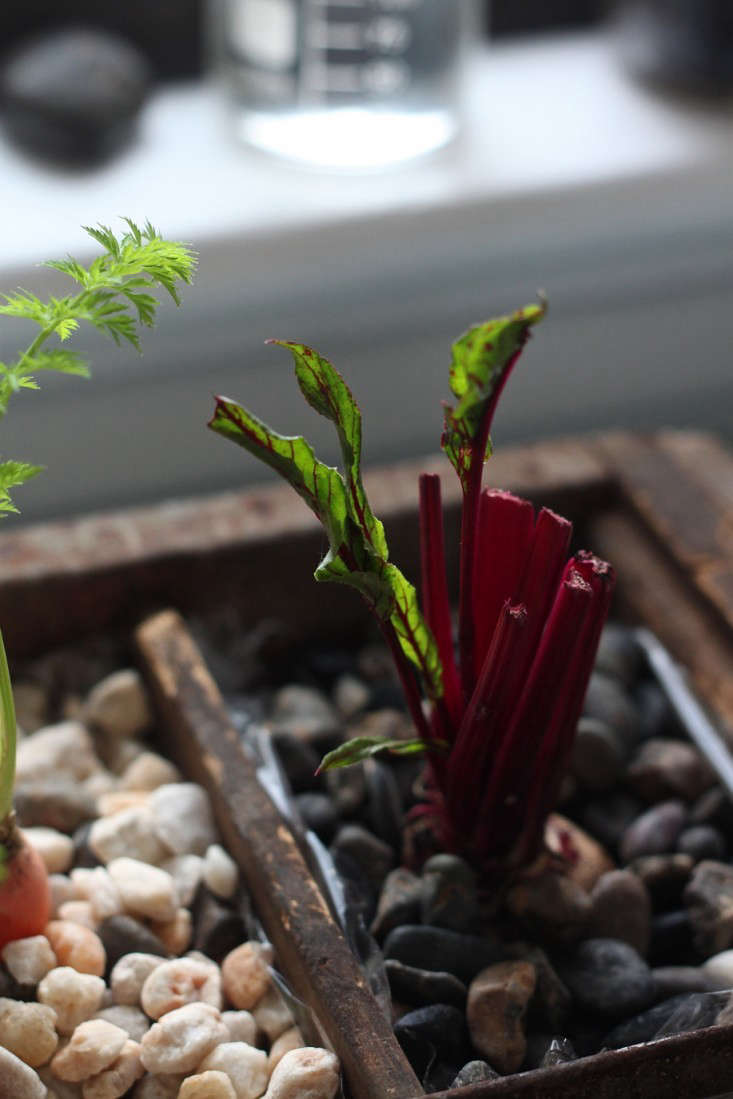

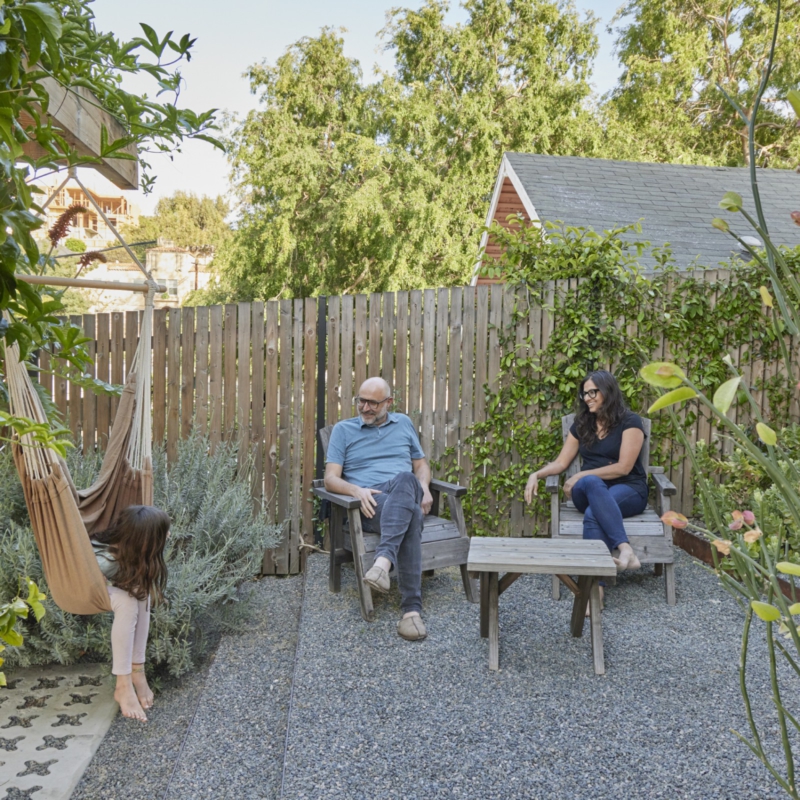

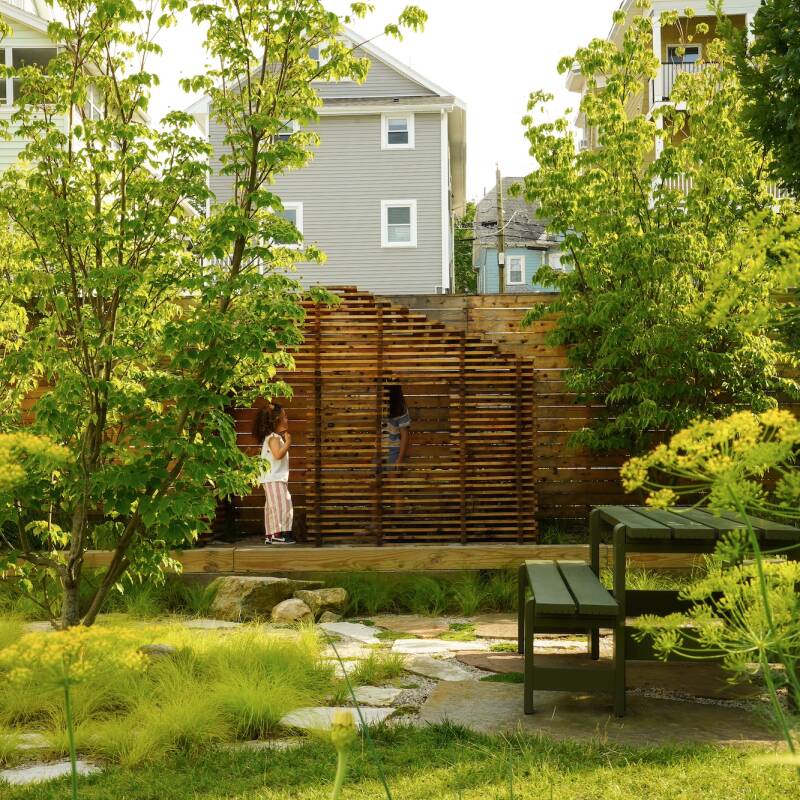



Have a Question or Comment About This Post?
Join the conversation